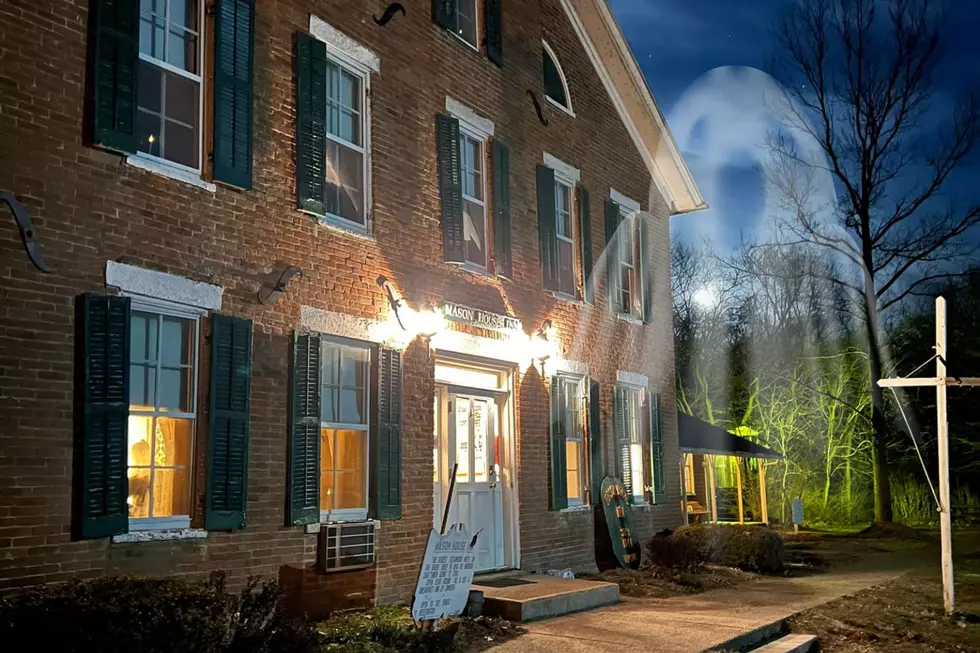![Average-Looking Cedar Rapids Home Has a Very Important History [WATCH]](https://townsquare.media/site/675/files/2021/02/Iowa-Culture.jpg?w=980&q=75)
Average-Looking Cedar Rapids Home Has a Very Important History [WATCH]
The Cedar Rapids house above doesn't look special at a glance, but it definitely is. It's a home with a history that, just two weeks ago, got it listed on the National Register of Historic Places. This is the story of that home and the family that built it.
Dr. Percy Harris, his wife Lileah, and his family moved to Cedar Rapids in 1957. According to Cedar Memorial, he became Cedar Rapids' first black physician the following year. In a short time, Percy, his wife, and their growing family needed a larger home. The Harris' oldest child, Bruce, said it wasn't easy for the family because, "Not many people, in the nice neighborhoods of Cedar Rapids, would show homes to blacks."
In 1961, Robert Armstrong, the owner of the famous Cedar Rapids department store, had an idea. According to Little Village Mag, Armstrong had befriended the Harris family after Percy opened a doctor's office across from his store. Armstrong, who owned land next to St. Paul's Methodist Church, donated it to the church. The Harris family was the only black family in the congregation and Armstrong wanted some of the land he donated sold to them so they could build the home they so desperately needed. At the time, no blacks lived in the neighborhood.

A church conference was held on December 13, 1961. Armstrong gave a lengthy speech during the meeting, speaking as to why he believed the family should be allowed to purchase the land. He described how Percy's father was killed, and Percy himself was badly injured, in a car accident when he was just a toddler, and how his mother died before he was a teenager. How Percy ended up moving to Washington, D.C. to attend Howard University and eventually cleaned the Senate office building while in school. How Percy interned at St. Luke's Hospital before opening his own medical practice and that, at the time of Armstrong's speech, nearly all of Percy's patients were white.
This is part of what Armstrong said at that meeting:
I feel that this man as a Christian brother in this church should be given the opportunity to live where he wishes to live and if this man is good enough to become a member of St. Paul's Church and take the Oath of membership in this church, I believe that he is good enough to live beside me, or you, or any other member of this church and that is the issue and only issue involved here.
You can read the full transcript of the meeting HERE, courtesy of Little Village Mag. At the end of the meeting, 751 people voted on the sale... 460 of them in favor.
In late May 1962, the Quarterly Conference had a special meeting in which 40 voted in favor of the sale, with only one against.
On June 1, 1962, the building permit was issued and on Saturday, February 9, 1963, the Harris family moved into the newly built seven-bedroom home at 3626 Bever Ave. S.E. The family would never move again.
Lileah Harris passed away in 2014, at the age of 83. She got a degree in Russian from the University of Iowa when she was 62-years-old. According to the Gazette, her father was the first black physician in Waterloo.
Dr. Percy Harris died in 2017. He was 89. During his life, Percy served as Linn County Coroner and was the county's first Medical Examiner, a position he held for nearly four decades. He was also the President of the medical staff at St. Luke's Hospital. During his time as head of the hospital's medical staff, St. Luke's began performing open-heart surgery. He retired in 1999.
Percy and Lileah had twelve children. Every one of them graduated from college.
LOOK: 50 essential civil rights speeches
LOOK: 28 Modern Black History Makers & Moments
More From 98.1 KHAK









